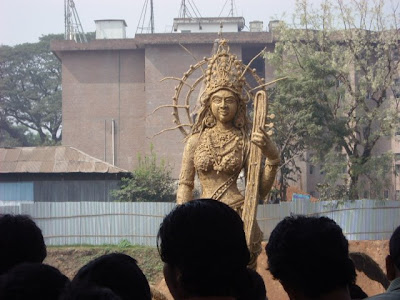As Saraswati is considered as the Goddess of wisdom and knowledge, Hindu devotees, especially students, celebrate the Saraswati Puja in different educational institutions and temples. raditionally, the students of Dhaka University's Jagannath Hall celebrate the Puja setting up 35-40 mandaps, which every year turn into the main attraction of the celebrations.
The Puja is also arranged at DU dormitories of girls, Dhaka College, Eden Girls' College, Buet, Dhakeshwari Mandir, Siddeshwari Temple, Ramkrishna Mission and temples in Tantibazar, Shankharibazar, Banglabazar, Mohakhali and Farmgate areas in the city.
here is some session in DU campas, Dhaka Bangladesh






























